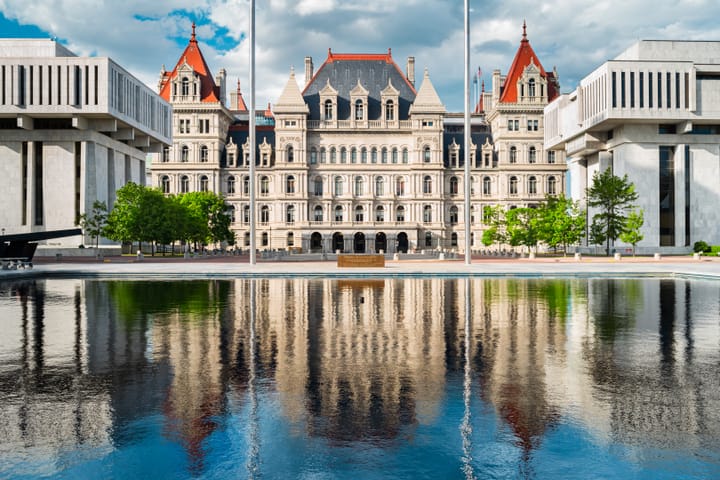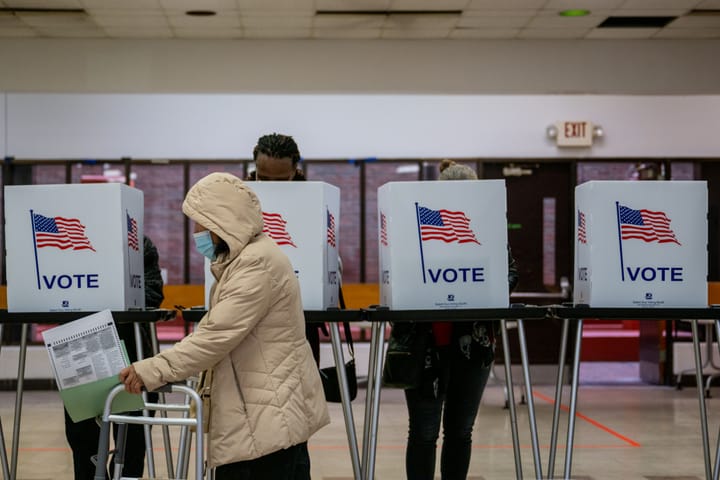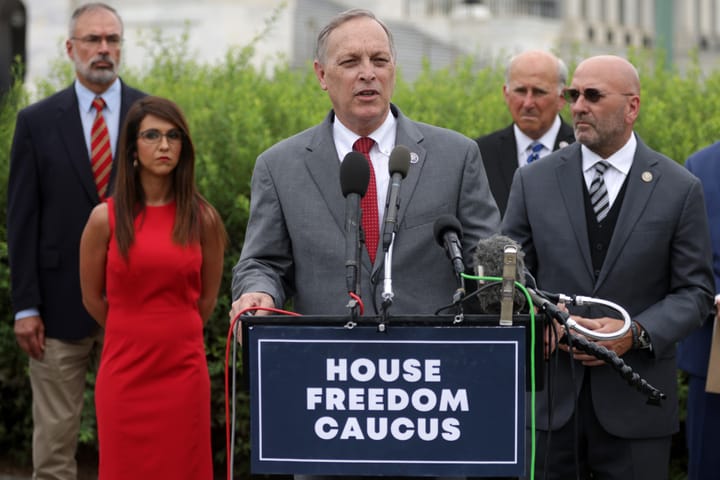In New York State this year, voters and candidates are picking up a new public campaign financing program that is making its debut this election cycle.
More than 300 candidates for New York State Senate and Assembly opted-in to the Public Campaign Finance Program (PCFP), which allows candidates to qualify for public matching funds based on small donations, from $5 up to $250, that they raise from residents in their districts.
The program’s supporters, including the nonpartisan good-government institute the Brennan Center for Justice, say it will level the playing field for candidates who don’t bring wealthy donor networks to their runs for office, and prioritize time spent in outreach to everyday New Yorkers.
An analysis of the New York program’s potential statewide, released by the Brennan Center early last year, found that the matching formula would enable state legislative candidates to raise the majority of their campaign funds in small donations from residents in the districts they seek to represent. In the 2022 cycle, small donations made up only 11% of funds raised by state legislative candidates. If the PCFP incentivizes greater participation, small donations in the matching program could soar to fully two-thirds of the total, according to the analysis.
📹 Share this post on Instagram
The statewide program was modeled in part after a successful small-donor matching system in New York City elections, one that was overwhelmingly strengthened by voters in a 2018 ballot measure. A 2021 analysis by the Brennan Center found that with the program in place, the New York City Council reflected the makeup of the city’s population in terms of local council members who are women and people of color. More than 14 states and two dozen localities nationwide offer versions of public campaign financing for political hopefuls.
Sludge speaks with Joanna Zdanys, deputy director in the Brennan Center’s Elections & Government Program, about the program's strong participation in its debut cycle.
The path to the program’s rollout this year had no shortage of hurdles. In 2019, New York’s massive budget law included the establishment of the PCFP, scheduled to launch after the 2022 election cycle. But in last year’s state budget negotiations, legislators were moving plans that would delay funding for the program and the body that would administer it, the Public Campaign Financing Bureau (PCFB). At the start of May 2023, after activism from state pro-democracy groups like Citizen Action of New York, an adequate funding level for the PCFP was secured. Then, toward the end of year, state legislators passed a bill that would have undermined the program’s matching formula, but Gov. Kathy Hochul (D) vetoed the measure on Dec. 27, preserving what supporters call a “key pillar” of the program.
New York’s program offers an innovative tiered formula that encourages small donations: eligible contributions for state legislative office are matched where the first $50 of a contribution is matched at a 12:1 ratio, the next $100 is matched at a 9:1 ratio, and the next $100 is matched at an 8:1 ratio.
Sludge talks with Rebecca Garrard, deputy executive director at Citizen Action of New York, about how New York's small-dollar matching program levels the playing field for state candidates.
To qualify for the program, candidates must first meet matching thresholds, which this cycle for state Senate was at least $12,000 raised from 150 district residents, and for Assembly was at least $6,000 raised from 75 district residents. Contributions from PACs, companies, and anyone outside of the district are not eligible to be matched in the program, among other rules. Participating candidates are subject to maximum amounts that they can receive in matching payments for primary and general elections: $375,000 for Senate, and $175,000 for Assembly, with further limitations applying to unopposed races. Matching-contribution data for each candidate is posted online, participating candidates are subject to spending limits of their personal funds, and statewide candidates must agree to participate in at least one public debate before each election, among other requirements like post-election audits.
“We are pleased to see such a high level of interest in the Program in its inaugural year. It has attracted a high level of interest from candidates from all corners of the state,” said PCFB Co-Director Cheryl Couser, in a March statement.
Joanna Zdanys, deputy director in the Brennan Center's Elections & Government Program, told Sludge in an interview that the more than 300 enrolled candidates in New York this year was a greater number than typically seen in the rollout of such programs in other states.
“We're also seeing that this is a program with really broad appeal across the state and the political spectrum,” Zdanys said. “Candidates from more than three quarters of the state's legislative districts are participating in the program, including candidates from rural, urban and suburban districts. That includes incumbents and challengers, Democrats and Republicans, and others across the political spectrum.”
“With over 300 candidates signed up for the Public Campaign Finance Program, the momentum is undeniable,” said Rebecca Garrard, deputy executive director for Citizen Action of New York, a grassroots membership organization that campaigned for the program. “This is a seismic shift in New York’s elections—where real people, not just the ultra-wealthy, can finally elevate candidates who reflect their values.
“For too long, millionaire and billionaire donors have overshadowed the voices of everyday New Yorkers, but this program is breaking their grip on our democracy,” Garrard said.
New York's 2026 election cycle will be the first with statewide candidates for governor, lieutenant governor, attorney general, and comptroller eligible for the small-dollar match.
Sludge videos produced by Spencer Snyder



